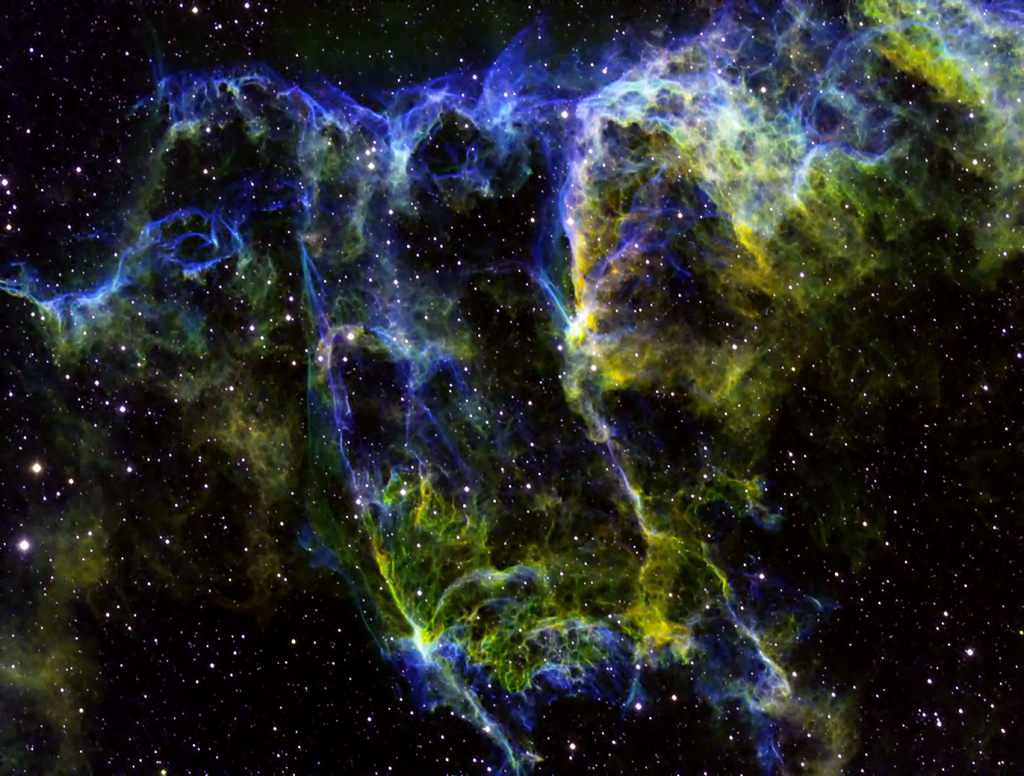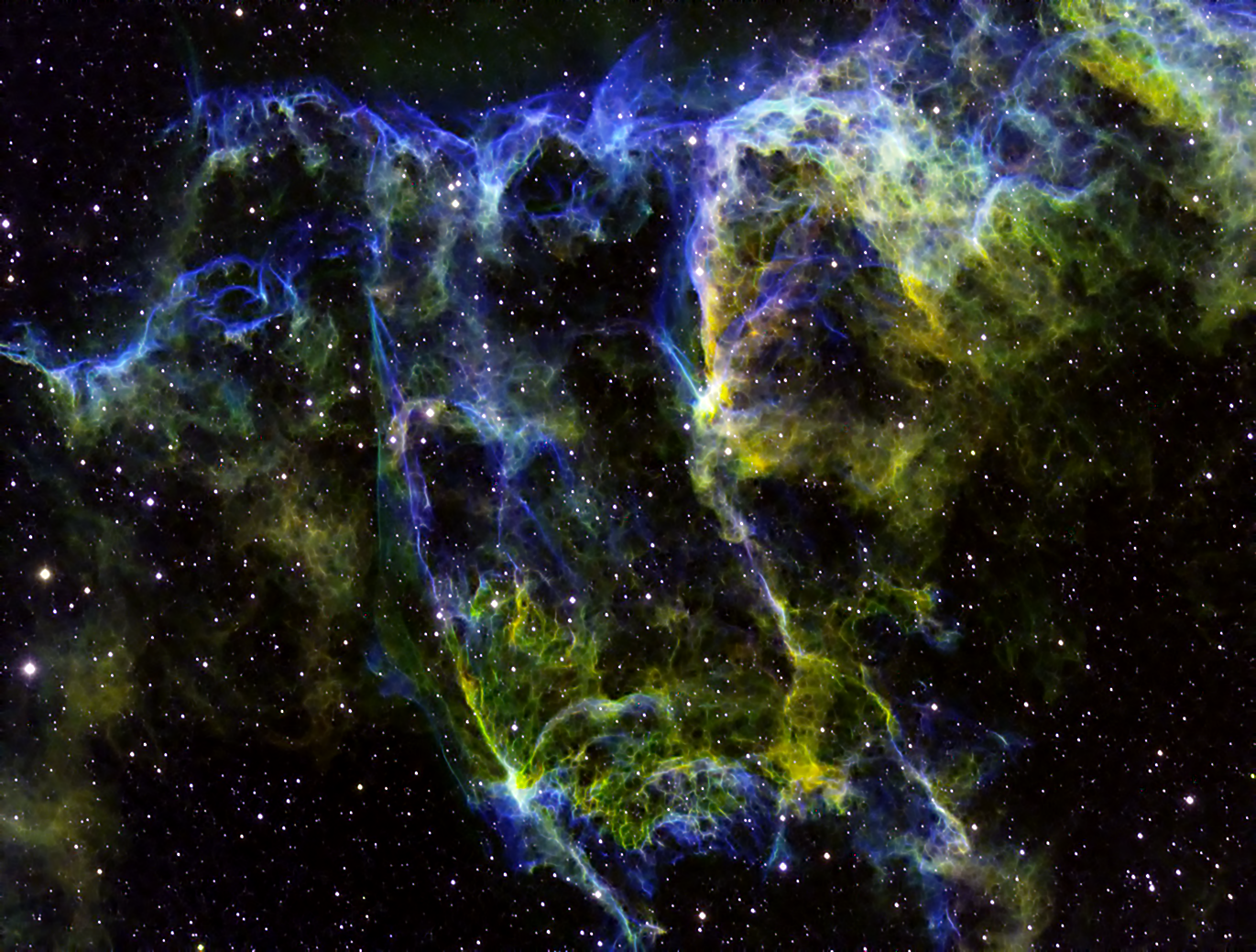
Similar Posts
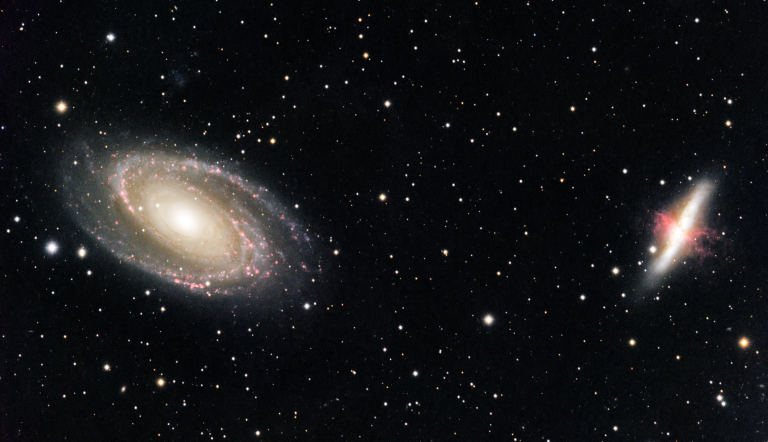
Bode’s Galaxies (Again)
Seems I revisit this pair of galaxies, 12 million light-years distant, every year. Although they are close and bright as galaxies go, they are challenging targets for imaging – especially if you are trying to pull out the faint jets spewing out of the Cigar Galaxy on the right. This image represents over 25 hours…
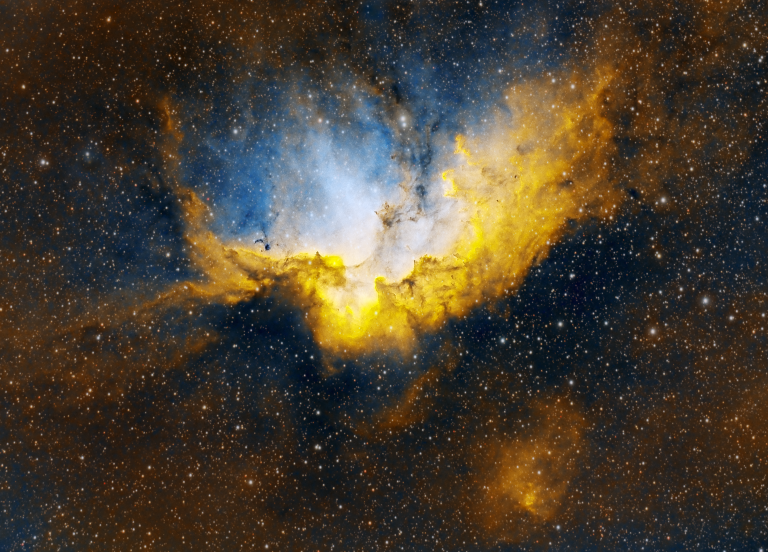
Off to See the Wizard (again)
These past couple of nights, I revisited the Wizard Nebula – home of a star cluster about 7,000 light-years away within the constellation Cepheus. This is a false-color image in the “Hubble Palette” where red, green, and blue represent ionized Sulphur, Hydrogen, and Oxygen emissions respectively. Can you see the “wizard”? Hint: he’s lying on…
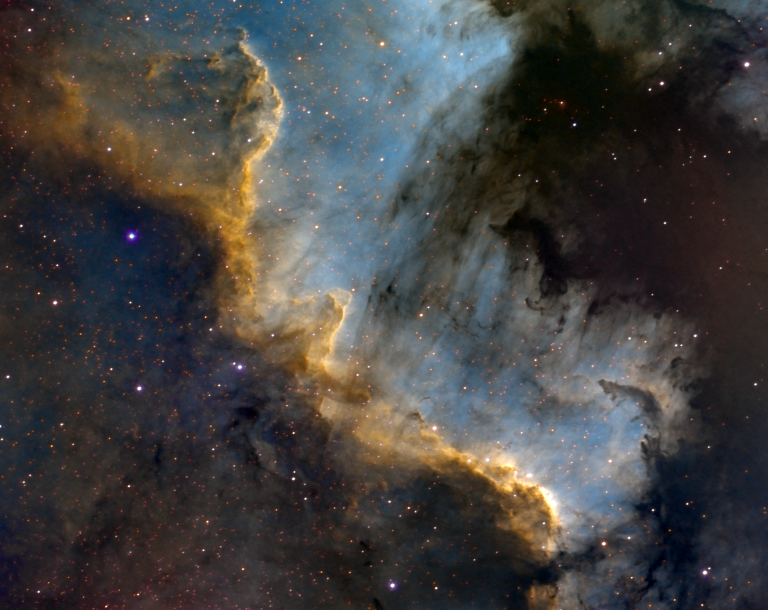
The “Cygnus Wall” of Star Formation
This portion of the North America Nebula in the constellation – you guessed it – Cygnus, is a giant cloud of ionized gases where new stars are being created. It’s also pretty. These are both false color images, processed a couple of different ways. The first is the classic “Hubble Palette” that maps ionized emissions…

NGC2903 feels lonely.
It’s a good thing galaxies don’t have feelings; they’re just collections of billions of stars. Because NGC 2903 would need therapy. It has no cute nickname like other galaxies; it’s just NGC 2903. And it has no galactic neighbors; most galaxies are gravitationally bound to other galaxies in their local group or cluster, but NGC…

Galaxies of the Hunting Dogs
The main galaxies in this image go by the unassuming names of NGC5033 and NGC5005 (5033 is the larger spiral galaxy.) They’re within a constellation named Canes Venatici, or “the hunting dogs.” Look closely, and you’ll spot a few other galaxies – some large but more distant, and some that are just really small and…
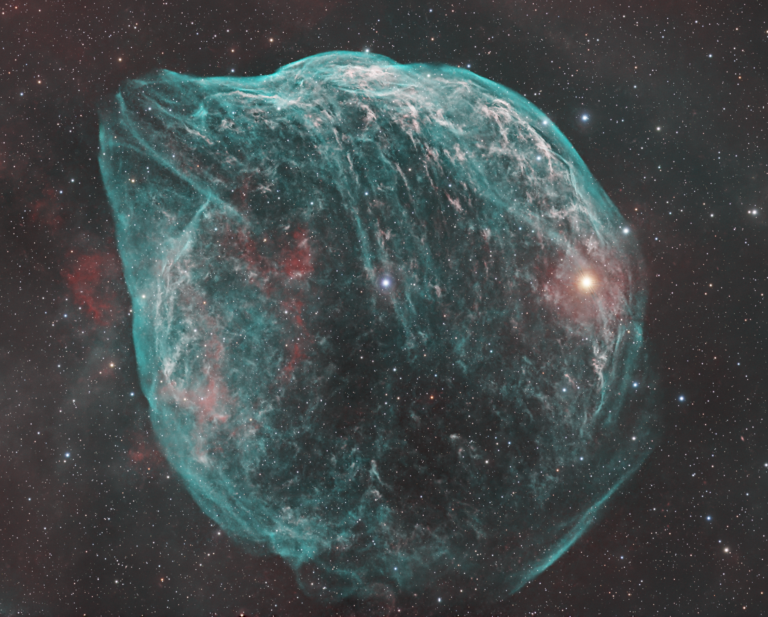
The Dolphin Head Nebula
A nebula that looks like its name! Formally SH-308, this bubble of gas 60 light-years across is blown out by a hot Wolf-Rayet star at its center. It’s about 4500 light-years away in the constellation Canis Majoris. It’s quite dim, but if you could see it with bionic vision or something, it would be larger…

Bode’s Galaxies (Again)
Seems I revisit this pair of galaxies, 12 million light-years distant, every year. Although they are close and bright as galaxies go, they are challenging targets for imaging – especially if you are trying to pull out the faint jets spewing out of the Cigar Galaxy on the right. This image represents over 25 hours…

Off to See the Wizard (again)
These past couple of nights, I revisited the Wizard Nebula – home of a star cluster about 7,000 light-years away within the constellation Cepheus. This is a false-color image in the “Hubble Palette” where red, green, and blue represent ionized Sulphur, Hydrogen, and Oxygen emissions respectively. Can you see the “wizard”? Hint: he’s lying on…

The “Cygnus Wall” of Star Formation
This portion of the North America Nebula in the constellation – you guessed it – Cygnus, is a giant cloud of ionized gases where new stars are being created. It’s also pretty. These are both false color images, processed a couple of different ways. The first is the classic “Hubble Palette” that maps ionized emissions…

NGC2903 feels lonely.
It’s a good thing galaxies don’t have feelings; they’re just collections of billions of stars. Because NGC 2903 would need therapy. It has no cute nickname like other galaxies; it’s just NGC 2903. And it has no galactic neighbors; most galaxies are gravitationally bound to other galaxies in their local group or cluster, but NGC…

Galaxies of the Hunting Dogs
The main galaxies in this image go by the unassuming names of NGC5033 and NGC5005 (5033 is the larger spiral galaxy.) They’re within a constellation named Canes Venatici, or “the hunting dogs.” Look closely, and you’ll spot a few other galaxies – some large but more distant, and some that are just really small and…

The Dolphin Head Nebula
A nebula that looks like its name! Formally SH-308, this bubble of gas 60 light-years across is blown out by a hot Wolf-Rayet star at its center. It’s about 4500 light-years away in the constellation Canis Majoris. It’s quite dim, but if you could see it with bionic vision or something, it would be larger…

Bode’s Galaxies (Again)
Seems I revisit this pair of galaxies, 12 million light-years distant, every year. Although they are close and bright as galaxies go, they are challenging targets for imaging – especially if you are trying to pull out the faint jets spewing out of the Cigar Galaxy on the right. This image represents over 25 hours…

Off to See the Wizard (again)
These past couple of nights, I revisited the Wizard Nebula – home of a star cluster about 7,000 light-years away within the constellation Cepheus. This is a false-color image in the “Hubble Palette” where red, green, and blue represent ionized Sulphur, Hydrogen, and Oxygen emissions respectively. Can you see the “wizard”? Hint: he’s lying on…

The “Cygnus Wall” of Star Formation
This portion of the North America Nebula in the constellation – you guessed it – Cygnus, is a giant cloud of ionized gases where new stars are being created. It’s also pretty. These are both false color images, processed a couple of different ways. The first is the classic “Hubble Palette” that maps ionized emissions…

NGC2903 feels lonely.
It’s a good thing galaxies don’t have feelings; they’re just collections of billions of stars. Because NGC 2903 would need therapy. It has no cute nickname like other galaxies; it’s just NGC 2903. And it has no galactic neighbors; most galaxies are gravitationally bound to other galaxies in their local group or cluster, but NGC…

Galaxies of the Hunting Dogs
The main galaxies in this image go by the unassuming names of NGC5033 and NGC5005 (5033 is the larger spiral galaxy.) They’re within a constellation named Canes Venatici, or “the hunting dogs.” Look closely, and you’ll spot a few other galaxies – some large but more distant, and some that are just really small and…

The Dolphin Head Nebula
A nebula that looks like its name! Formally SH-308, this bubble of gas 60 light-years across is blown out by a hot Wolf-Rayet star at its center. It’s about 4500 light-years away in the constellation Canis Majoris. It’s quite dim, but if you could see it with bionic vision or something, it would be larger…

